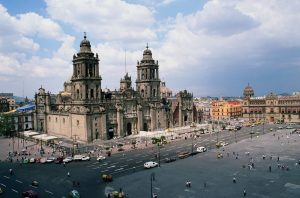Anthony Ortega
May 3, 2020
Spring 2020
Assignment #5
The Pantheon and the Hagia Sophia are two well-known structures in architecture. Although they have different heights, different materials, and other physical properties, they are very similar as well. The Pantheon was a Roman temple that finished construction and opened in 126 AD. The Hagia Sophia was built during the Byzantine time period in Constantinople, Turkey in between 532 to 537CE. From aesthetics to special traits, the Pantheon and Hagia Sophia have identical concepts.
Starting off with one of their biggest features, their dome. Although the Pantheon and the Hagia Sophia have different dome diameters, the dome is a common feature that they both share. The Pantheon has a dome of 142 feet in diameter, while the Hagia Sophia has a diameter of 102 feet. With this being said, they are both circulars. The Pantheon has coffered patterns along with the interior of the dome. The Hagia Sophia has a dome pattern as well, similar to the coffered pattern in the Pantheon, but instead, they are Mosaics, and they allow the sunlight to enter. The Hagia Sophia has a circular dome, but surrounding it are semi-circle domes and an apse, that further strengthens the similarities of having domes or spherical components. Additionally, there are pillars inside each building. The Pantheon and the Hagia Sophia have pillars underneath the circumference of the dome that create aisles for people. They are also components that keep the building standing, especially with the domes being on top. Not to mention, the high pillars in each structure help create great amounts of space inside the Pantheon and Hagia Sophia. Space was used for people to worship the Roman gods in the Pantheon or practice the beliefs of the Orthodox Christian Church. Lastly, their exterior appearances are similar in which they have tall columns that attract the attention of visitors. The Pantheon has a portico with columns that support the pediment. This was a common feature in Roman architecture. The Hagia Sophia has 4 columns surrounding the building, one being in each corner. These columns are tall, which appeal to the visitors, and attract more people. The Hagia Sophia’s columns are taller than the columns found in the Pantheon, but it is still a feature found in both these structures.
In conclusion, the Pantheon and Hagia Sophia are different buildings, however, upon deeper analysis, there are similar features found in each other, including the fact that they both have domes, columns, and patterned interiors. It’s fascinating how buildings can have the same concepts, yet tell different stories in different ways.



